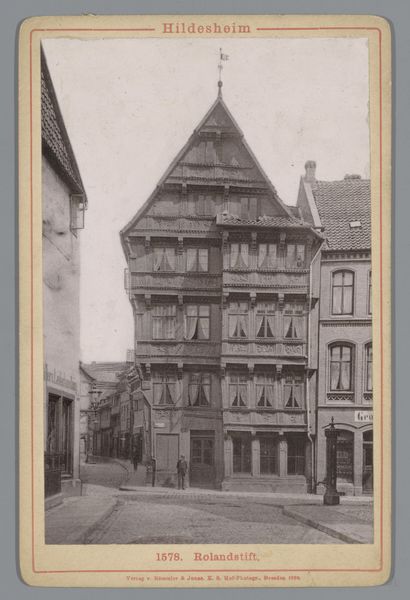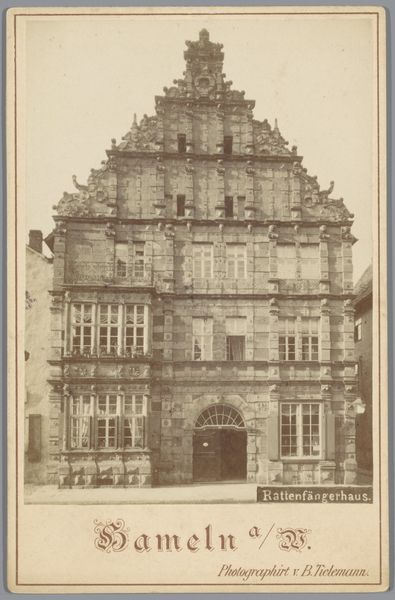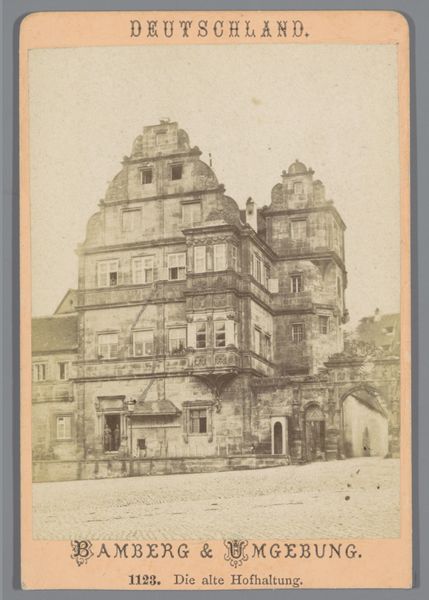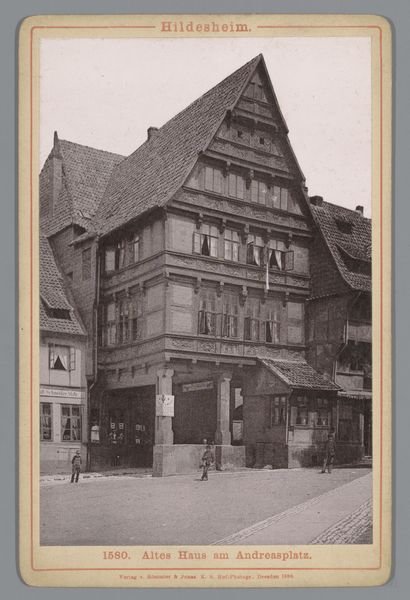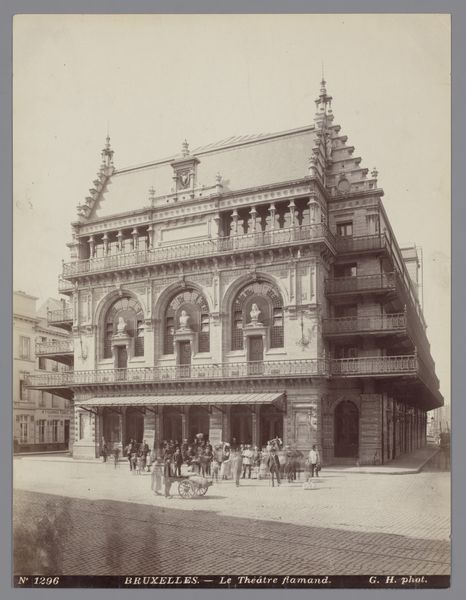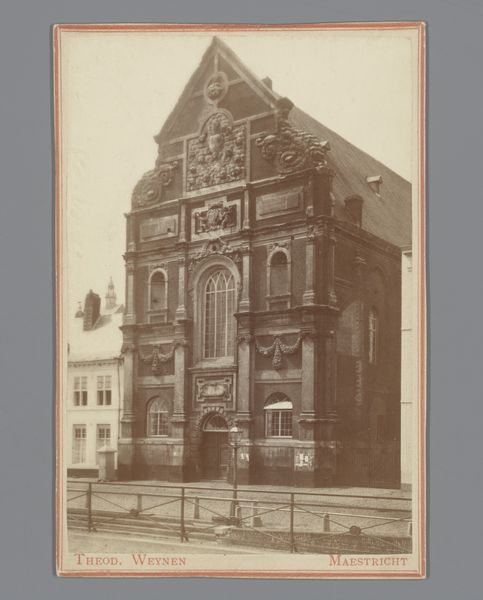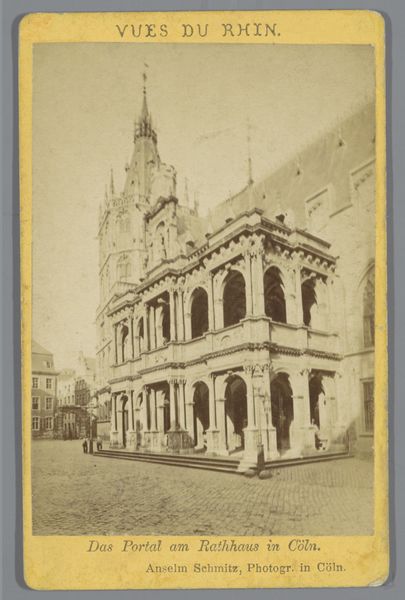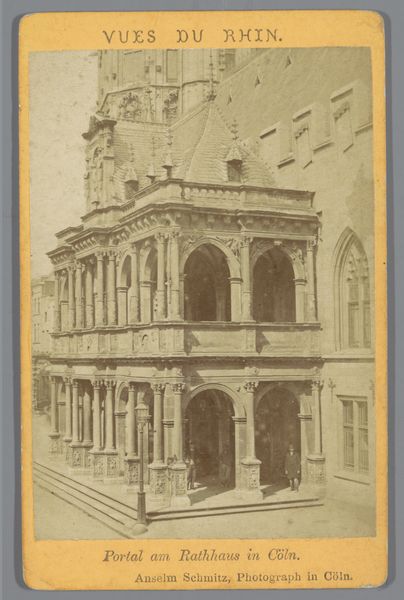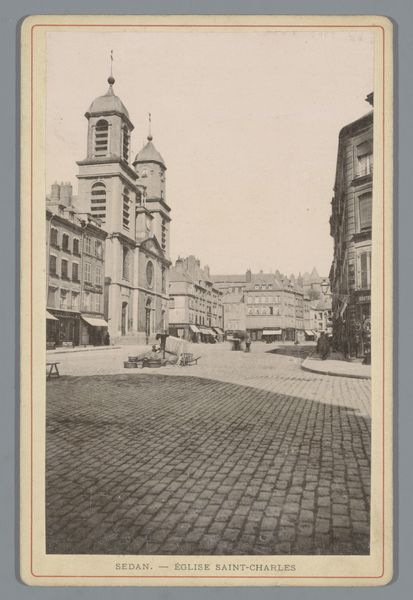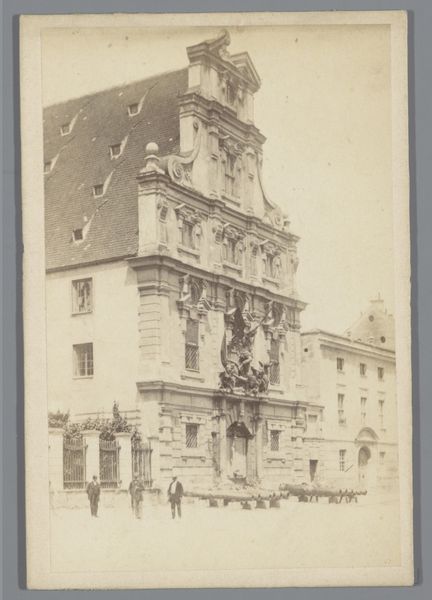
#
historical design
#
aged paper
#
homemade paper
#
paper non-digital material
#
photo restoration
#
historical fashion
#
unrealistic statue
#
paper medium
#
historical font
#
columned text
#
building
Dimensions: height 166 mm, width 108 mm
Copyright: Rijks Museum: Open Domain
Editor: This is a photograph entitled "Gezicht op de lakenhal in Brunswijk," placing it somewhere in Brunswick, taken between 1880 and 1900 by Johan Nöhring. It looks like it's printed on aged paper. It's fascinating how monumental the building looks, almost like a layered cake. How do you read this photograph? Curator: It’s more than just a building, isn’t it? Think about the Lakenhal – a cloth hall. These spaces were vital economic and social hubs. It becomes less about the pretty facade and more about power. Who had access? Whose labor built this monument? Editor: I hadn't considered it in that light, more as a representation of civic pride or wealth, displayed architecturally. So you're saying we should look at it critically. Who was excluded from that power? Curator: Precisely! This was during a period of burgeoning industrialization, right? Who were the textile workers? What were their working conditions? The photo, by framing the grandeur of the Lakenhal, also indirectly highlights those who were exploited. This romanticized view conveniently leaves out crucial elements. It obscures labour disputes, child labor and the social struggles of the time. Doesn't it seem a little too perfect? Editor: It definitely feels different now. Knowing that, the photo shifts from a charming depiction to almost an oblivious or, worse, deliberately obscuring one. This brings a much needed depth and broader relevance to an image of this building. Curator: Exactly. Consider how photography itself played a role in shaping those perceptions! This isn't just about aesthetics; it's about the social narratives we perpetuate. Editor: That’s a very powerful way of reading a historical image. It moves past the visual and gets into the ethical and political considerations of its creation and reception.
Comments
No comments
Be the first to comment and join the conversation on the ultimate creative platform.
